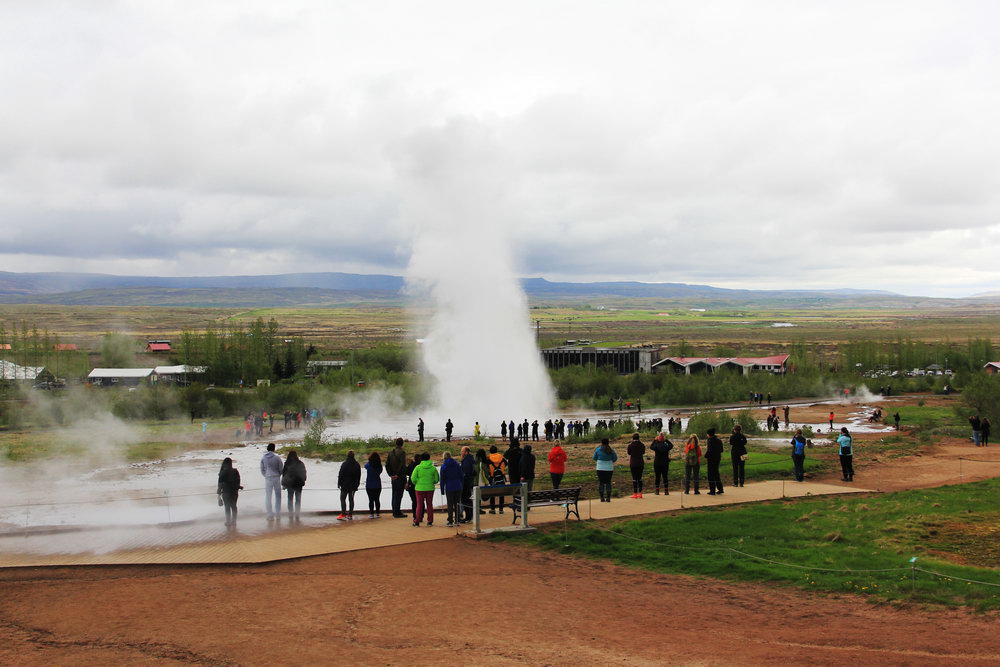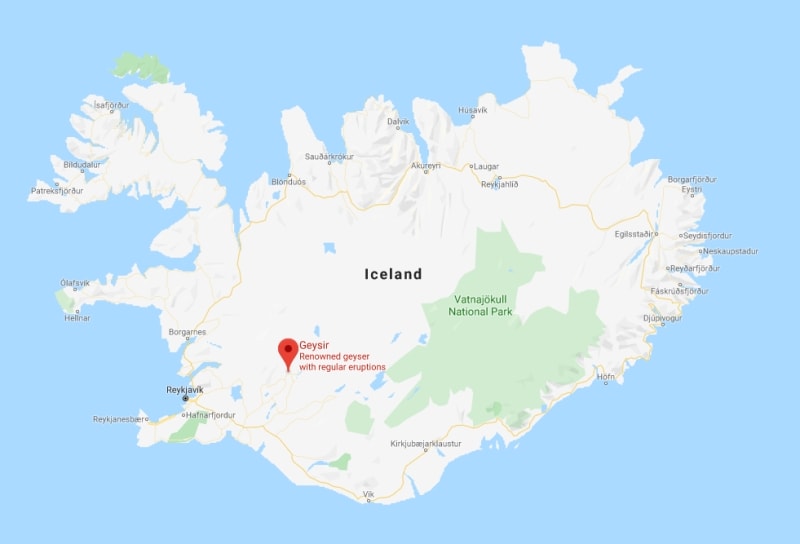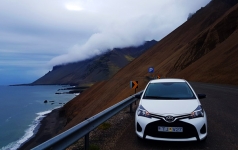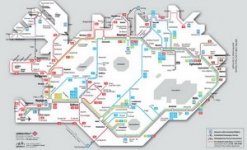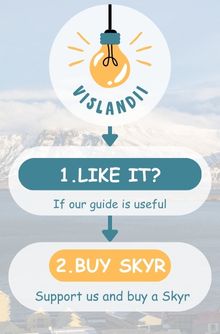The geyser is a famous hot spring in the geothermal zone of the Haukadalur Valley, discovered in southwestern Iceland.
The geyser is one of the attractions of the world-famous Golden Ring route of Iceland, along with the Tingvellir National Park and the powerful Gullfoss waterfall. The geyser is best known for giving its name to geysers all over the world.
Content:
- What is a geyser?
- Iceland's main Geyser and the sights of the Haukadalur Valley
- Nearby attractions
- History
- Where to stay near a Geyser (Geyser)?
- How to get to the Geyser (Geyser)?
What is a geyser?
A geyser (the name comes from the Icelandic geysa — to gush) is a hot spring that periodically emits fountains of hot water and steam under pressure to a height of several tens of meters. Geysers are one of the manifestations of volcanic activity.
Other manifestations of volcanic activity are mud boilers (pits with bubbling mud), fumaroles (holes in the ground from which steam and smoke come) and hot springs.
Boiling water erupts from the geyser at certain intervals (the frequency of eruptions can range from several minutes to several years). With a roar, a huge column of boiling water, shrouded in thick clouds of steam, flies up in a large fountain, sometimes crumbling at a height of up to 80 m.
The fountain beats for a while, then the water disappears, the clouds of steam dissipate, and a state of rest ensues.
Usually there is a pool or a shallow crater around the geyser, several meters long. The edges of such a basin and the adjacent area are covered with deposits of minerals contained in boiling water. These deposits are called geyserite. Near some geysers, cones of geyserite are formed from several centimeters to several meters high.
Geysers exist in such countries:
- Iceland (hence the name geyser)
- Russia (Valley of Geysers in Kamchatka)
- USA (Yellowstone National Park)
- New Zealand (on the north island, near the city of Rotorua)
Small single geysers exist in Japan, China and Chile.
How does a geyser work? - underground geyser consists of caves (chambers) and the passages and cracks (channels) connecting them. Such cracks are often found in frozen lava flows. These voids are filled with circulating groundwater, at a shallow depth from which there are uncoated magmatic foci, that is, incandescent magma. This magma heats the water and when the water reaches boiling point, the vapor pressure increases and pushes the water to the surface.
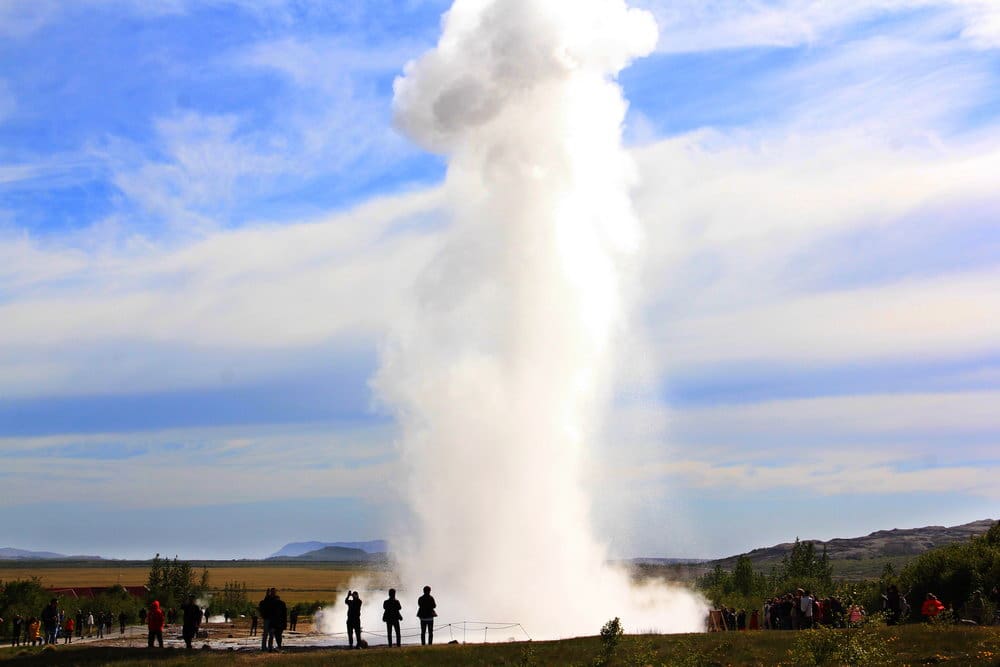
The eruption of geysers occurs in different ways, depending on the size of underground chambers, on the shape of channels and the location of cracks, on the amount and speed of groundwater inflow into them and on the intake of heat from the depths. Water moves when heated - the heated lower layer of water becomes lighter and rises to the surface, and colder water from the surface sinks down, where, warming up, in turn, rises. Thus, vapors and gases continuously seeping through cracks from the depths warm the water, bringing it to a boil. If the geyser channel is wide and has a more or less regular shape, the water, moving (circulating), mixes, boils and splashes out onto the surface in the form of a hot spring. If the channel is winding and narrow, the water cannot mix and heats up unevenly. Due to the pressure from above the water column, the water below is overheated and does not turn into steam. Steam is released in separate bubbles. Accumulating at the bottom, compressed steam tends to expand, presses on the top layer of water in the channel and raises it so much that it splashes out onto the surface of the earth, rising in small fountains — harbingers of an eruption. Splashing water reduces the weight of the column of water in the channel; consequently, the pressure at depth decreases, and the superheated water, being above the boiling point, instantly turns into steam.
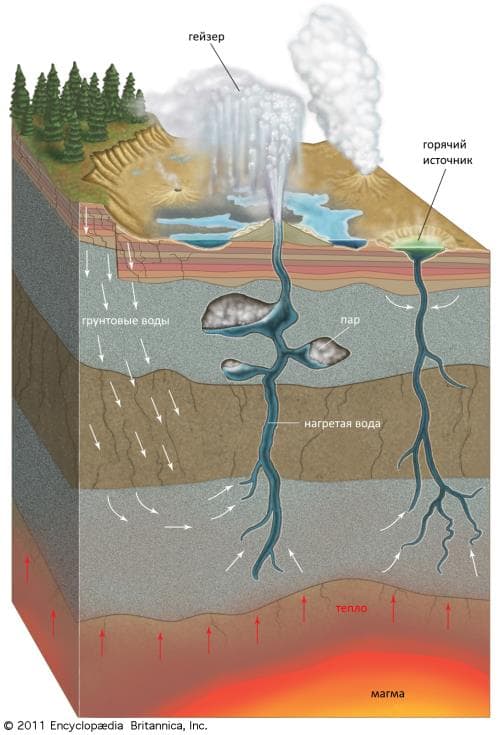
Iceland's main Geyser and the sights of the Haukadalur Valley
Although the Geyser is rarely active these days, there are many hot springs and active geysers in the Haukadalur Valley, including the powerful Strokkur, Smidur and Little Strokkur.
Strokkur geyser, Strokkur is the most famous hot spring in Iceland, it emits huge jets of boiling water to a height of 20 to 40 meters. Don't worry about missing this incredible sight, as Strokkur erupts every five to ten minutes. It's worth choosing a point for a photo or video, turn on the camera and be ready!
Strokkur and Geyser are often confused with each other. But the Geyser is much more powerful, but it can take years between eruptions. The Geyser is currently in an inactive phase. When it erupts, water can shoot up to 70 meters into the air. It has a swimming pool with a diameter of about 18 meters. The smooth bottom of the pool in the center turns into a rounded vent about 3 meters in diameter, shaped like the bell of a pioneer forge. The channel of the geyser goes to a great depth, connecting underground cracks with caves, periodically filled with hot water and steam. The water temperature in the geyser at the surface is up to 80 °, and in the channel at some depth up to 120 °.
Just a few minutes from the Geyser there are many fumaroles releasing steam and gas into the cool Icelandic air. Perhaps this is why Haukadalur is sometimes called the Icelandic Valley of Geysers. In addition to observing the hypnotic columns of steam, you will also be able to observe yellow sulfur spots along the fumaroles themselves, as a result of the action of minerals crystallizing around the rock, as well as feel the "pleasant" smell of sulfur around.
In the southern part of the valley, ÞYkkvuhverir, boiling mud pots of various sizes and shapes can be observed. Such boilers are actually fumaroles that boil through loose soil saturated with water.
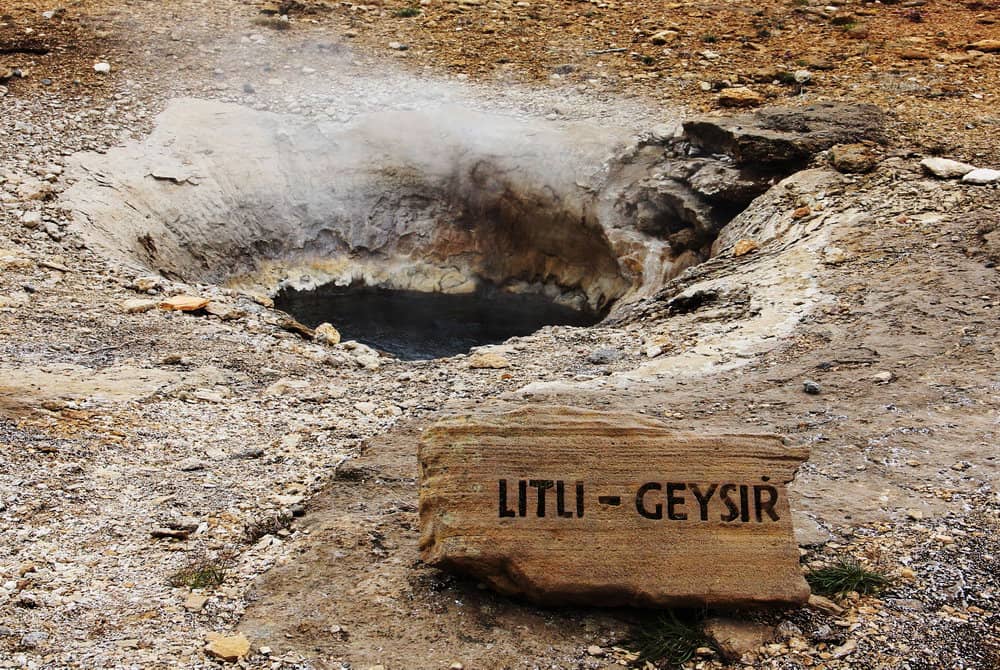
Nearby attractions
About two kilometers from the Geyser there is a preserved hot natural pool called Kulaug. It can accommodate from three to five people at a time. The pool temperature is 39-43°C, depending on where you are in the pool.
The water is a little dirty, as the pool is built on soil, and the bottom is slippery due to algae, so we recommend being careful.
In recent years, forests have been actively restored in the Haukadalur region, thanks to experiments on restoring forest cover in Iceland. Today, the Haukadalsskógur forest is one of the largest forests in the south of Iceland, it has many walking paths (also accessible to people in wheelchairs), interesting plants, and there is also a museum The Tree Museum, which was built in memory of forester Gunnar Freysteinson.
History
Settlements have been found in the Haukadalur region since ancient times, as well as many places in this region were used in religious worship. The scientist Ari "Wise" Morgilsson grew up here and the first pastoral school in Iceland was built in the same place.
The current wooden church was last rebuilt in 1938, but its architectural style dates back to 1842, so it's worth a visit to see how Iceland looked before industrialization.
Where to stay near a Geyser (Geyser)?
If you want to stay near the Geyser and the Haukadalur thermal zone, then the following options may be suitable for you:
- Gullfoss Hotel is located about 7 kilometers from the Geyser
- Geysir Hotel is located closer to the Geyser, literally on the other side of the road from the thermal activity zone, here you will also find a restaurant, cafe and souvenir shop.
- many private guest houses are located in the area, often private houses offer more budget accommodation.
How to get to the Geyser (Geyser)?
To understand where the Geyser is located, just look at the map of Iceland:
An interactive map with the geyser (and other sights of Iceland) is here.
As with most attractions in Iceland, the Geyser is easiest to get to by rented car, especially since the journey from Reykjavik will take only a couple of hours, first along route 1, and then along route 35. Moreover, along the way you can explore many other attractions of the Golden Ring of Iceland.
Learn more about renting a car in Iceland:
Car rental in Iceland - tips and tricks
Rent a car in Iceland - how to choose proper car, what is the cost of renting a car, is it worth taking full insurance, where you can drive a car, and where you have t...
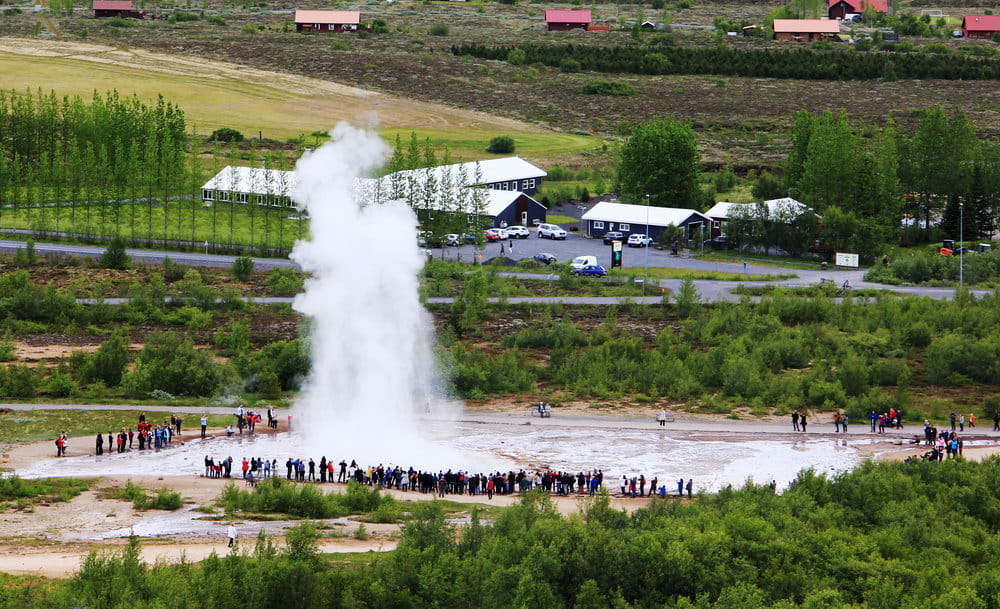
The Geyser can also be conveniently reached by public transport. You need to take the bus number 610 from Reykjavik, the schedule can be found on the website publictransport.is .
A couple of years ago, Hop-On-Hop-Off buses traveled along the route of the golden ring, but unfortunately now there is no such opportunity and all the same companies sell 1-2-day tours.
Learn more about public transport in Iceland
Buses in Iceland, routes and schedules
The easiest and most popular way to travel around Iceland is to rent a car. But what if for some reason this option is not suitable for you?
Not many people kn...

